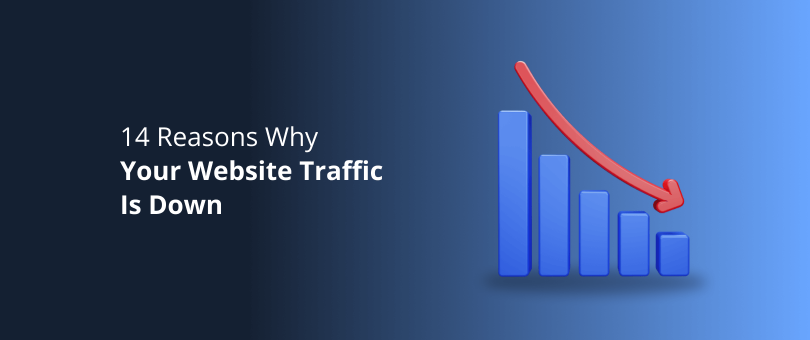When a website’s traffic is down, a lot of questions arise. Using tools like Google Analytics to monitor website traffic can be particularly enlightening when you’re faced with a consistent decline or a sudden drop. This situation happens to every site and often gives its owners sleepless nights.
The decline could be a clear signal on how to act in a timely fashion and with appropriate measures. Or it could be something organic that will right itself eventually. Either way, you should know what is going on and take precautions.
The good news is, with Google Analytics, there is a lot of data to help you sort out the reasons for the drop. And most of those reasons are usually very much within your control.
Website Traffic Drop Diagnostics
Are You Measuring Right?
Before investigating, you have to make sure that your measuring tools are properly working – there is a very slight possibility that the website is fine, but you are simply missing some data.
Depending on what tools you use, it is possible that something might be causing them to not work properly. For example, it can happen that after some website changes, your Google Analytics code may have stopped delivering the numbers to your account.
Or the statistics plugin on the site admin might have been deactivated or may need to be updated, etc.
Google Analytics is the golden standard to monitor website traffic. Together with Google Search Console,you should check that everything is set up correctly and that the right data is being delivered.
Also, make sure that there aren’t any neglected notifications and alerts. Once all of this is checked, you may proceed with diagnosing the real problem.
How Does the Traffic Drop Look in Time?
The next task is to observe what the issue looks like. When examining the site’s traffic statistics, you need to go back at least one full month – even better would be 3-6 months – where it would be easier to notice the changes in the curve.
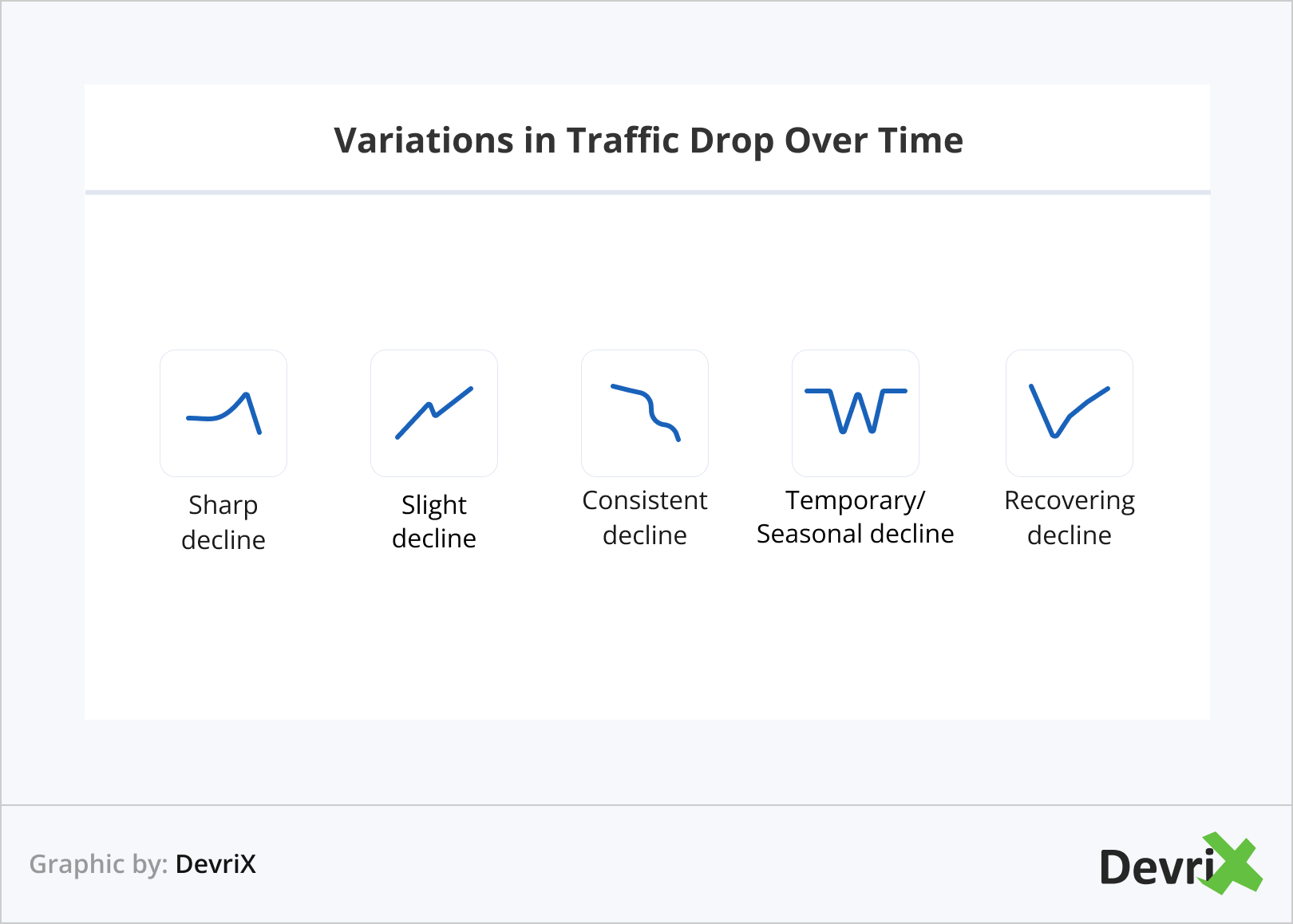
Here are some questions to answer so that you better understand what is going on:
- Is it a slight drop in website traffic over time, or is it a sudden and sharp drop? The difference in both cases is related to the severity of the problem – the steeper the curve, the more dramatic the situation and the faster you have to act. The reasons for a steep curve may vary significantly – from a new competitor stealing traffic to a hacker attack or a penalty.
- Has the website drop been a consistent tendency for over a month? A steady and continuous decline usually represents a chronic issue that is not likely to disappear by itself. You should take this concern seriously and develop a strategy to deal with it.
- To see the tendency more clearly, set the graphic to monthly numbers like this:
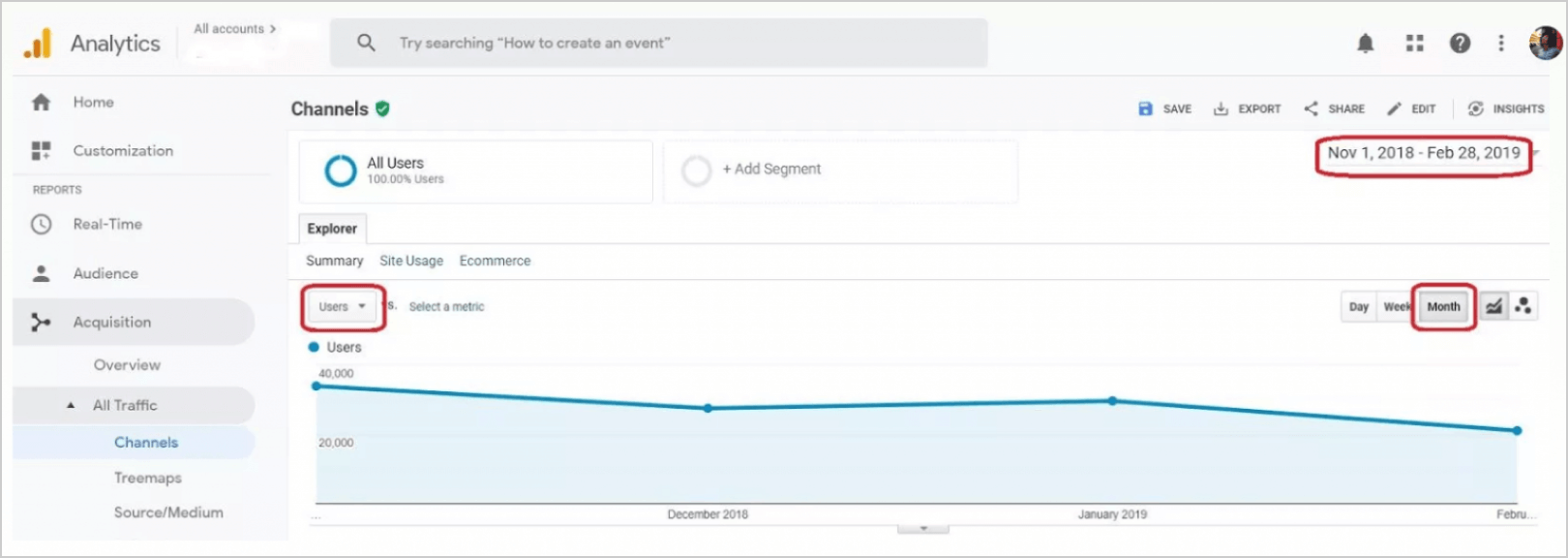
- Was it a temporary drop or a seasonal decline? You can compare time periods using the compare tool in the Google Analytics calendar. With it, you will be able to compare previous periods, or similar points of time in the past to discover trends or seasonal differences in user behavior or traffic sources. Once you’ve discovered the pattern, it will be easier to recognize the reasons behind it and adapt.
- Does it seem that the drop in website traffic is recovering on its own? When the website traffic has gone down for some time and starts recovering back to normal, the problem is obviously less severe. In this scenario, temporary external factors like seasonal fluctuations or the cessation of a traffic source could be the possible reasons. However, it’s still highly advisable to identify these factors to take preventive measures.
A thoroughly complete traffic analysis looks at every factor of the site statistics at the present moment together with historical changes, including backlinks and competition.
Which Traffic Metrics Are Down?
You need all the details available, or it won’t be possible to find the website’s traffic is down. Overall organic traffic is usually the most obvious metrics that attracts attention when declining. But it is never the only one and definitely does not give enough clues. So look at:
- Traffic from certain sources. You need to check where you are losing traffic. For example, a link from social media could be broken and users from those sites might not be coming to the site anymore.
- New vs returning visitors. This is again related to sources, but in a different way. Returning visitors are your sales leads and come from your regular follow-up activities such as email marketing, push notifications and remarketing on social media. New visitors may come from increasing your SERP results, scaling your audience or publishing on a new channel. Be sure to check the activity on all traffic sources.
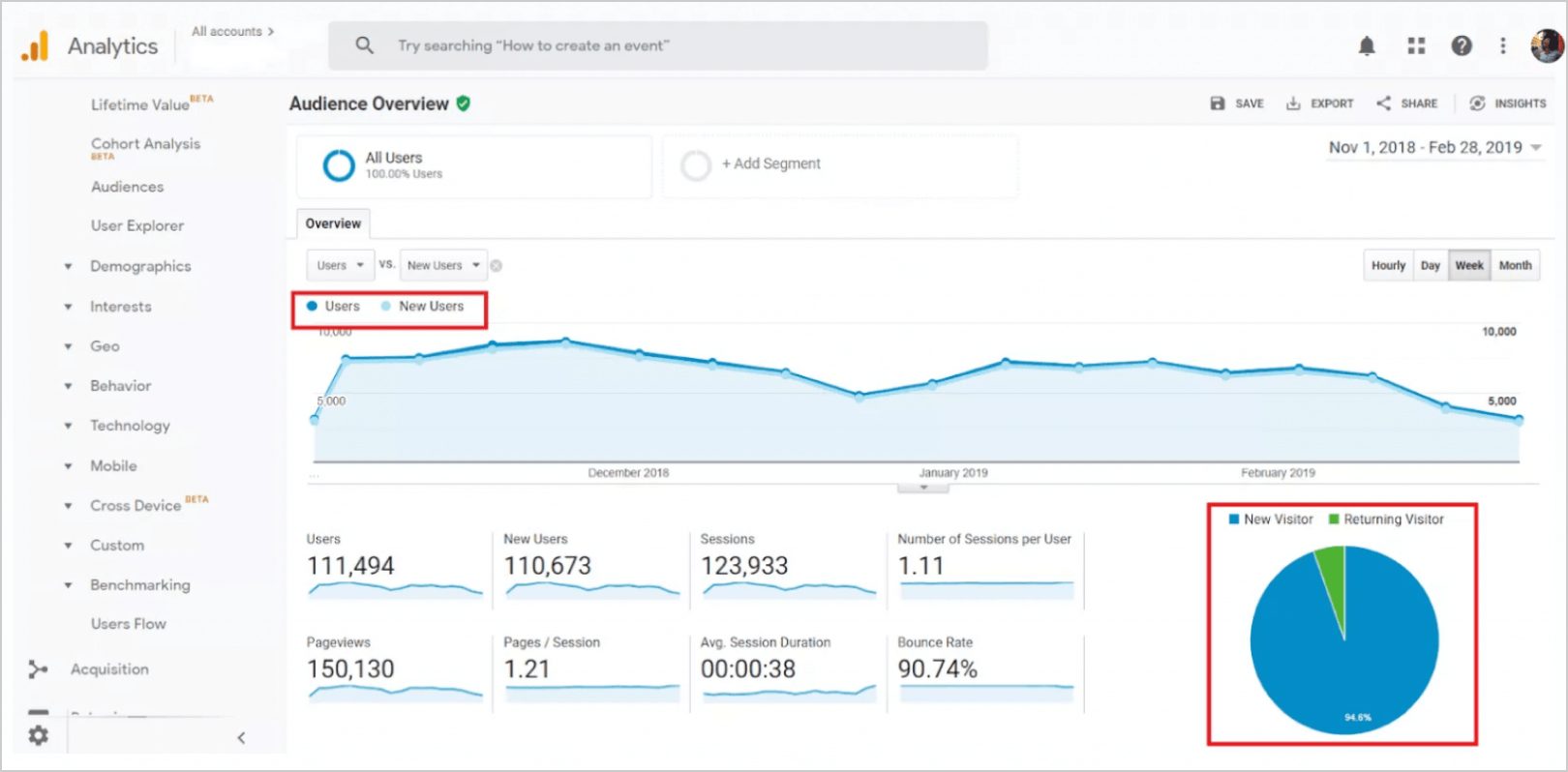
- Desktop or mobile. The use of different devices is primarily related to people’s habits and behavior. But it also depends on the services you provided in both cases and the way you present them. If you stopped offering a service or content that used to be popular with mobile users or the UX broke after changes on the website, it is only natural that you lose part of your returning website visitors.
These are just a few examples. Remember – each metric has its own purpose and speaks for itself. In case it is down, it may be part of a bigger problem, so it is important to identify the reasons behind it.
14 Reasons Why Your Website Traffic Is Down

- PPC campaigns you have run and then stopped.
- Backlinks that you’ve lost.
- Good site content that has been removed.
- Any theme, plugin or third-party tool changes or updates.
- No more content promotion.
- Lack of content updates.
- Not producing new content on a regular basis.
- Design / UX issues.
- High bounce rate and low conversion rates.
- Google updates.
- Google penalties.
- Hosting changes or limitations.
- Competition rise and/ or content hijack.
- Toxic backlinks.
1. PPC Campaigns You Have Run And Then Stopped
When rolled, these campaigns drive paid traffic and increase your overall traffic, so a certain decline is normal after they have been stopped.
2. Backlinks That You’ve Lost
Check whether popular sites have removed your link. Pay extra attention to high authority domains that link back to your page. These can easily devalue your backlink profile, causing your SERP ranking to decrease.
3. Good Site Content That Has Been Removed
As a rule of thumb, before deleting content you should check how it is performing. Goes beyond explanation: never delete your best pages or posts.
4. Any Theme, Plugin or Third-party Tool Changes or Updates
These can cause some disruptions on your WordPress website, so make sure to double-check which parts of your site were affected and how. In particular, look for changes in your heading tags, and as well as in your custom and SEO settings.
5. No More Content Promotion
If, for example, you have stopped sharing links to your site on social media, you might see a drop in the traffic coming from those sources. To avoid this in the future, make it a habit of conducting an SEO site audit regularly. Then, resume the social media promotion using the right keywords and type of content to engage your audience again.
6. Lack of Content Updates
Typically, search engines like Google index updated pages more frequently. If your site doesn’t update its content after a while, this might be a primary reason for a consistent traffic decline.
Regarding content freshness, it’s crucial to distinguish between indexing and ranking. Google indexing your content indicates its potential for ranking.
To achieve the highest possible ranking, your content must include elements and keywords that offer the best answer to a specific query and subject, known as QDF (Query Deserves Freshness).
Such queries can include hot topics or recent events, regularly recurring events, and frequent updates.
7. Not Producing New Content on a Regular Basis
It is recommended to write new content at least once a month, but if competition is strong, you may have to switch to a few articles per week. This way you create more value for your customers and more pages that Google can crawl and show in SERP.
8. Design / UX Issues
Yes, the traffic drop may be due to a change in the design and the overall user experience. As a rule of thumb, when you change the way users interact, there is always a risk of losing part of them – that will be seen in the number of returning visitors.
User pathways are very important, so test well before changing them and introduce changes in small, measurable steps to give users time to adapt and yourself the chance to measure each change’s impact.
9. High Bounce Rate And Low Conversion Rates
This is also in your control: if visitors leave the website very quickly, it’s a bad sign for Google that the UX is not good for them, or you are not providing what they were looking for. As a result, your rankings could continuously drop and affect the website’s traffic.
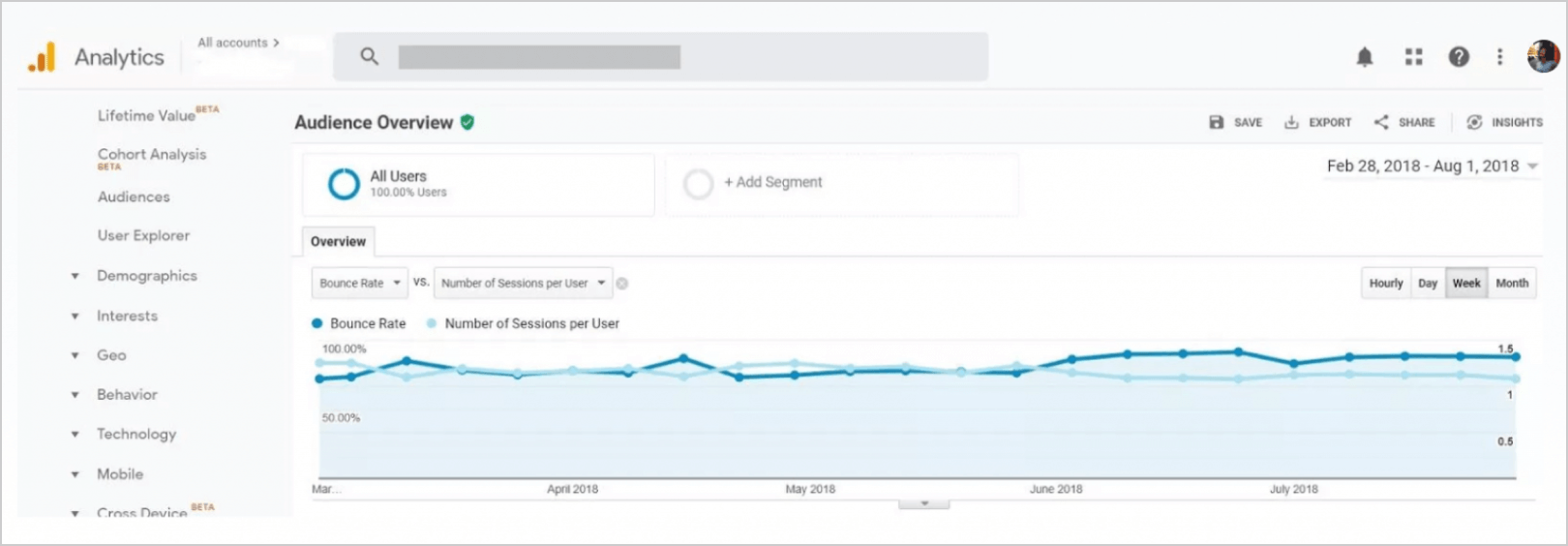
Check the activity of everyone who has worked on the site.
Make a similar checklist for your team and your development agency, with the main purpose of finding out what has been changed on the website. Review the history of edits to the site’s code.
Check for changes in the content structure like new categories, tags, etc. Keep an eye on your top-performing keywords.
Watch out for improperly built or unindexed new page templates.
If you’ve pinpointed where the web traffic metrics dropped, you’ve solved half of the equation. However, if your strategies have remained consistent and nothing was done differently, actively search for outside factors.
If the traffic decline cannot be attributed to any specific activities on your part, then the reasons may be beyond your control.
The number of possible outside reasons could also be quite a lot but there are a few that are worth examining: Google updates or penalties, changes in the hosting services, competitors and toxic backlinks.
10. Google Updates
Google updates are the most quoted reason for drops in organic traffic.
It’s only natural that updates affect Google’s content ranking methods and how it indexes a site to generate organic traffic. Following an update, many sites often report changes in their Google SERP positions.
Although a website’s traffic drop is not the same issue as a decline in Google SERP ranking, they are closely related. When your site’s positions are “dancing” and you start losing traffic, it is very likely the reason is a Google core algorithm update. What you have to do is find out how the update changed the ranking principles and devise a strategy to deal with that.
Read also: How Google’s Core Web Vitals Will Affect Ranking
11. Google Penalties
A more severe case is if your site has fallen victim to a Google penalty. In this case, the traffic curve would go steeply downwards. To check for that, log into your Google Search Console account, find the affected property (that is your website) and read the alerts Google gave you.
Also, check for messages on your Google Webmaster Tools tab that alert you to harmful activity or errors on your site. These could also be issues like Crawl Errors and HTML errors.
With penalties, you have to keep in mind that If there is no sign of a manual penalty, it still can be an automatic one. That doesn’t mean that Google is going to inform you.
Utilizing one or more SEO tools like SEMrush, Ahrefs, Moz, Majestic or Sistrix to analyze in depth what has happened to your Google rankings is a nice start if you are not using them on a constant basis already.
Read also: Google’s Two-Click Penalty for Publishers Explained
12. Hosting Changes or Limitations
A hosting change does not really have an effect on site traffic by itself. But it is possible that the new hosting package might have more limitations than the old one. These limitations can directly affect site speed, the capacity of visits, caching, some core logic on your website, and other back-end issues like database queries, etc.
Eventually, all that affects the traffic volume your website can withstand.
You need to examine your access and error logs. And you also need to check how the hosting change date is related to the traffic curve. A technical problem like that would show a drop immediately.
13. Competition Rise and/or Content Hijack
In highly competitive markets where content and SEO strategies and Google Analytics to Monitor Website Traffic are used a lot, it is very likely that a competitor hijacks your SEO program. This gives them a direct view of your most precious keywords and backlinks. Additionally, it is redirecting traffic to their website, instead of yours.
In this case, after losing Google ranks your organic traffic will drop. Therefore, it’s time to find an SEO marketer to help you out with a new content strategy and optimization.
14. Toxic Backlinks
Outside threats such as toxic backlinks to your site seem easy to spot, but they may take quite different forms. Check the site’s health and strength in Google webmaster. Then do a backlink analysis.
Remove the spammy (or “toxic”) backlinks if there are any, and decide how to deal with the low-authority ones. Then submit the website for fresh indexing by the webmaster search engine tool.
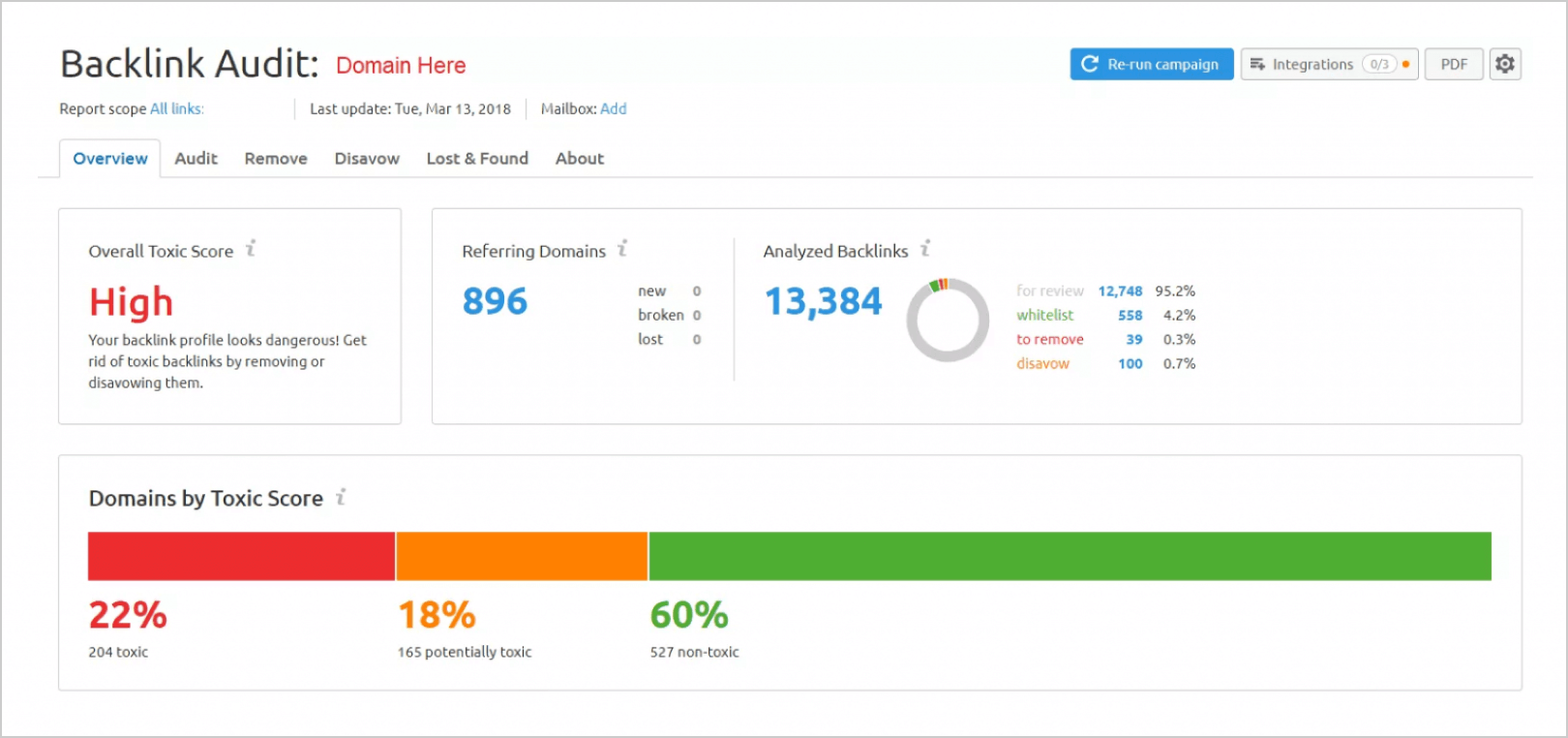
How to Boost Website Traffic Again
Remember that Google’s algorithm is also quite complex and if you are meticulously and patiently doing things right, you will overcome the declining website traffic.
Search engines continue to reward websites that provide valuable content and excellent user experience, so with good and consistent efforts your site can soon be back on track with a full recovery in traffic volume.
The purpose of this article is to assist you in dealing with the drop in website traffic by yourself. But you do not have to stop there – help is always available. Find an expert or hire an agency to deal with it.
At DevriX, we start with a complete site audit. Then – depending on the issues found – we propose a maintenance plan for routine technical work and/ or a retainer plan for both marketing and/or technical partnership.
